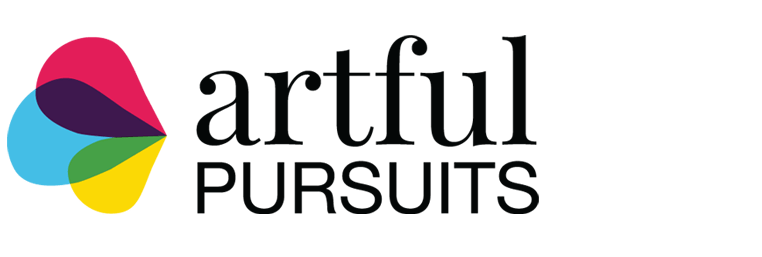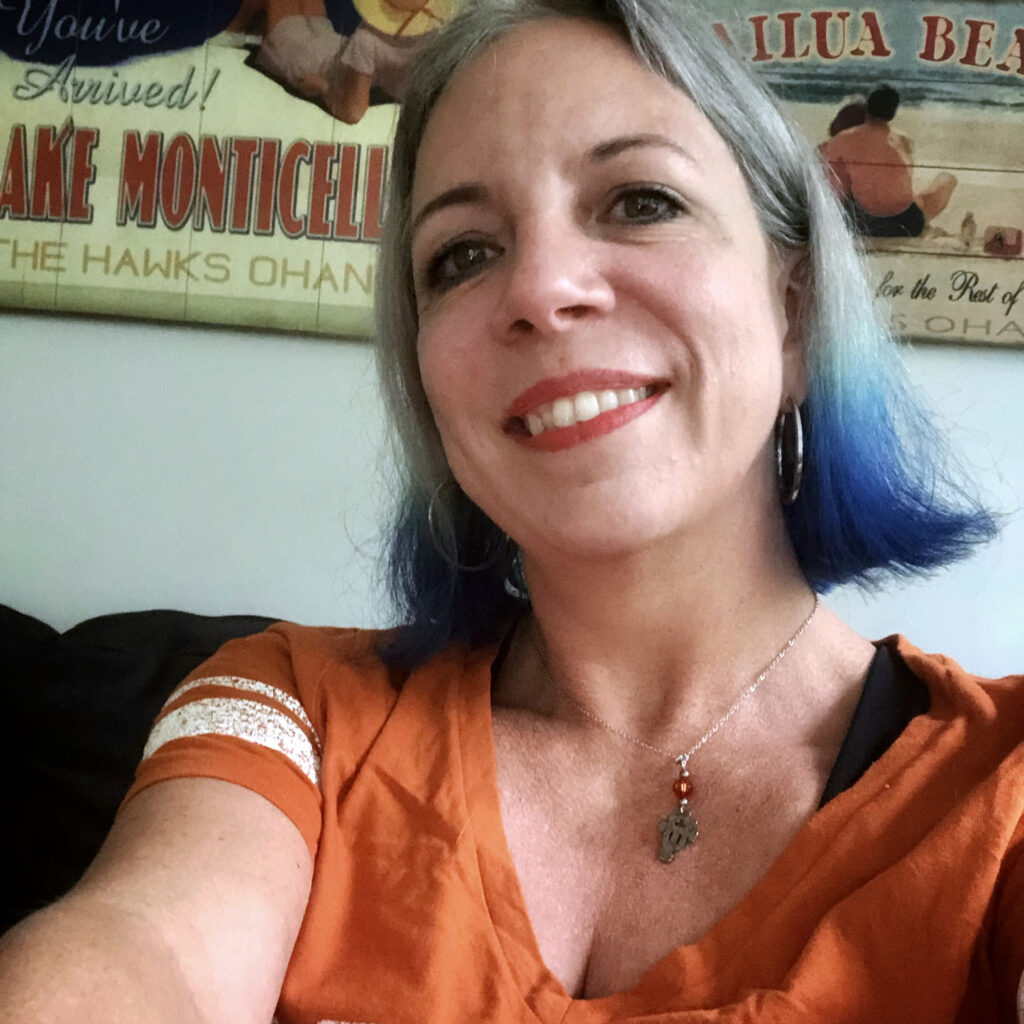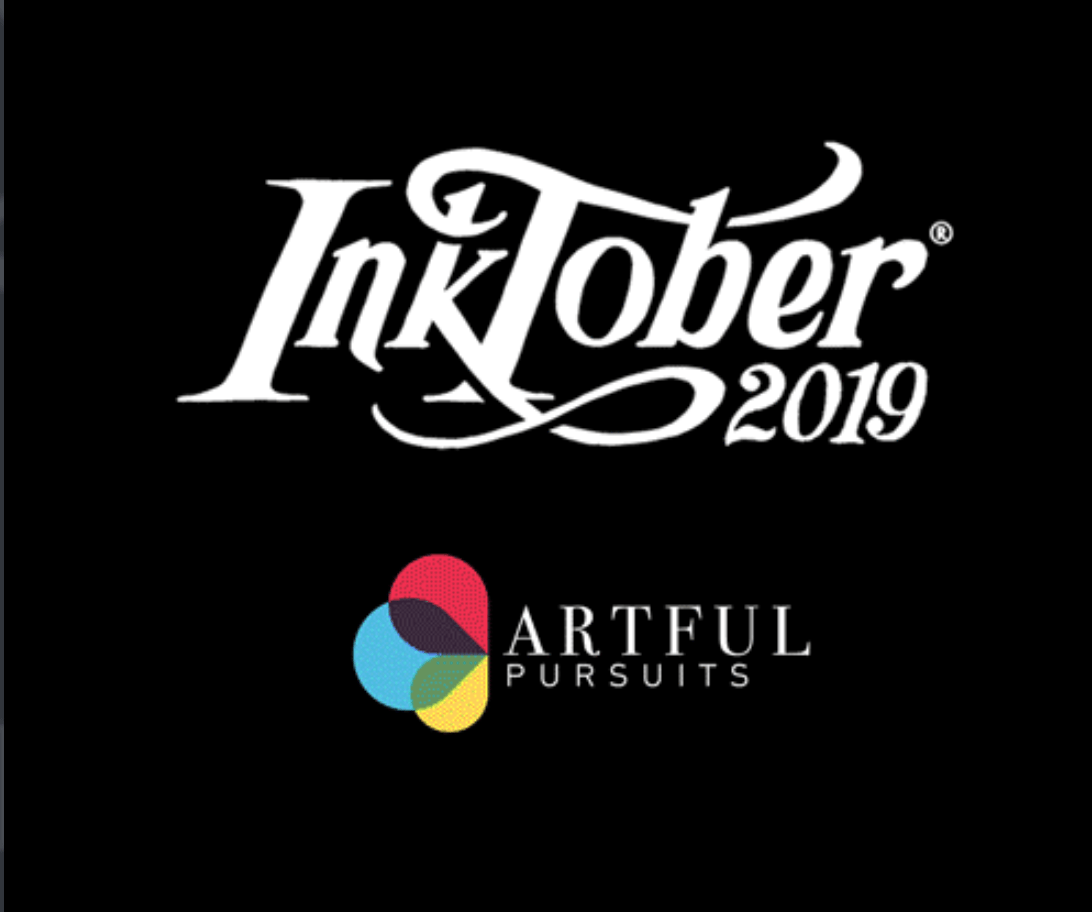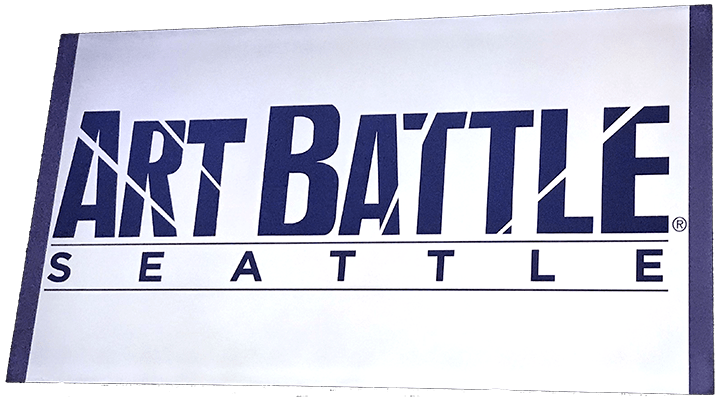Every October, artists all over the world take on the Inktober drawing challenge by doing one ink drawing a day the entire month.
Inktober is a month long art challenge created by artist Jake Parker in 2009 that is focused on improving skill and developing positive drawing habits. Every day, for the month of October, anyone participating in the Inktober challenge creates an ink drawing and posts it online. Remember to use the hashtags #inktober and #inktober2019 if you want your art to be seen by everyone.
Inktober rules:
1) Make a drawing in ink (you can do a pencil under-drawing if you want).
2) Post it*
3) Hashtag it with #inktober and #inktober2019
4) Repeat
*Post it on any social media account you want or just post it on your refrigerator. The point is to share your art with someone.
Challenge Not Contest
Inktober intends to get you to draw better, flex a little, and/or have some fun with your art. Inktober is a challenge NOT a contest to see who is the best artist. It’s a challenge to see how much you can improve your art in a month, and to be inspired or to help inspire other artists to do the same.
Check out all the artistic benefits of joining art challenges in my recent post.
To Ink or Not to Ink
While it’s suggested to use real ink, keep things black and white, and use the official prompt list, the spirit of the challenge is very open to people being creative in what tools they use, how they use them, and what they create. Whatever your creative process is, use it. If you want to sketch in a pencil and then ink on top, that’s fine. If you want to sketch in crayon and then scan it into the computer and do your finished inking digitally, go for it. Watercolor? Markers? Paint? It’s your prerogative. As long as you are creating a new ink drawing every day, it counts. Feel free, not stifled.
Prompts
The prompts are there to help spark your creativity. If you have another idea, roll with it. There aren’t any Inktober sketchers with pitchforks that will come for you. Additionally, there are a lot of people who create different prompt lists you can work with. The cool thing about following a prompt, though, is seeing what everybody creates on the same day using the same prompt and how much variety and creativity there is inside of a single prompt. These are the official prompts of 2019:

Tools, Tips, and Lessons Learned
The official Inktober site has a nice list of tool suggestions. Below are the tools I’ve been using my first week of Inktober.
Paper
As for paper, I love Fabriano. I buy the large 22×30 sheets in bulk and create my own journals. This month, I’m doing Inktober in an accordion journal I created on a sheet of Fabriano cold press watercolor paper. In the next couple of weeks, I’ll be posting a video tutorial of how to make the journal, so check back!
Inktober Days 1-7

Day 1 : Ring
Tools — On day 1, I actually used a chopstick as my drawing tool and dipped it into my bottle of Higgins Black Calligraphy Ink. I have owned this bottle of ink forever and found it had a sludge-like consistency in the bottom of the bottle. After this drawing I threw the bottle out, but it still did the job. I also used some black india ink diluted with water for shading and a bit of red watercolor to finish it off.
Tips — Try to think of an alternate meaning for the prompt. I knew a lot of people would draw jewelry for the word ‘ring,’ so I brainstormed all the different meanings of ring I could draw including: circus, Olympics, boxing, doorbell, church bells, and the phone.
Lessons Learned — With pen and ink, you can’t undo a stroke. Embrace it. Don’t think of anything you put down as a mistake—it’s a challenge and an opportunity. The dark circle on the phone happened when my inky chopstick got crazy on me. I tried to just integrate it and make it look purposeful. In the end, it adds to the overall character of the drawing.

Day 2 : Mindless
Tools — On day 2, I used my favorite pen, Uni-ball .5mm black. It’s a simple, waterproof black pen. I then used a Daler Rowney acrylic ink in Flame Orange to paint the background.
Tips — If you’re less experienced inking and drawing like I am, use pencil first. There’s no shame in figuring out your lines in pencil while you can still erase and make adjustments. At the bottom of the birdcage head, for example, I got a little confused. I was able to make adjustments in pencil before I inked it.
Lessons Learned — Erase all your pencil lines after the ink is dry, but before you add color. Watercolor permanently sets your pencil lines. I knew that, but didn’t think to make sure I’d erased all the pencil lines before I filled in the background so I’ll always have this drawing as a reminder. lol.

Day 3 : Bait
Tools — On day 3, I used Daler Rowney acrylic inks in Marine Blue and Process Cyan. I dropped them onto the page and then squirted it with a water bottle to create the blended, water-like effect. After it dried, I used a Uni-ball Signo white pen to draw the fish and a Molotow white paint marker to get the thicker line of the fishing line.
Tips — Try drawing in white ink. It can be more impactful as most people are used to viewing black ink drawings.
Lessons Learned — Make sure you have enough contrast between your background and foreground if you choose to draw in white ink. I might still go back and darken things up a bit around the fish so the illustration stands out more.

Day 4 : Freeze
Tools— On day 4, I used my favorite pen, Uni-ball .5mm black. It’s a simple, waterproof black pen. I then used the diluted Black India Ink for the background.
Tips — Combine ideas that you like. I saw a sketch of this girl and a separate sketch of pattern clouds like this on Pinterest. I thought they would meld nicely together to show the concept of freeze. Combining ideas that you admire can lead to the development of a unique style.
Lessons Learned — A variety of patterns is interesting. I think, however, this drawing could be improved by using more varied line weights. I set a goal to use thick and thin lines in the upcoming drawings.

Day 5 : Build
Tools— For day 5, I used my Duke 551 Confucius Fude Nib Fountain Pen. I’m trying to be legit, ya know? One of my favorite urban sketchers, Pat Southern-Pearce recommended it. Plus, I used my Platinum carbon black fountain pen and my Daniel Smith watercolors.
Tips — Try to use colors in 3 places in your composition in a triangular shape. It adds a sense of cohesiveness to the finished piece. For example, if you look at the buildings and you draw an invisible line between the 3 green ones, it forms a triangle.
Lessons Learned — Patience, Grasshopper. Start with the light watercolor colors first. Let them dry. Then add the midtones. Let them dry. Then add the dark ones. If you go too fast, they bleed together in a big ugly puddle of impatience. Sigh.

Day 6-7 : Husky & Enchanted
Tools— For days 6 and 7 I used quite a bit of art supplies. I kind of went back to my mixed media roots on this one. I started by mixing Daniel Smith watercolors in the sky in a wet in wet technique and then sprinkling it with both a fine salt and a coarse salt. Then, I used my Payne’s Gray Daler Rowney Ink and dripped the horizon line across both pages. That had to dry for a while. Once dry, I splattered white gouache for stars and painted in the moon. Finally, I used the black pen to outline my shapes and filled them in with more Payne’s Gray Ink.
Tips — Combine two prompts into one large composition. I planned to skip the prompt ‘husky’ because I wasn’t feeling it. Then, as I was perusing the gorgeous Inktober posts on Instagram, I saw a silhouette sketch and became instantly inspired to do a wolf to go along with the haunted house I was planning for enchanted. These would have been more ‘meh’ alone, but they are pretty cool together.
Lessons Learned — If inspiration strikes, forget the rules. It took me a week to give myself permission to do art that more closely resembles my style. The second lesson I learned was that gouache will reactivate when wet, so know that it will mix with the media you try to put atop it.
Follow me on Instagram for #Inktober
I love to follow back and never follow/unfollow
Are you participating in Inktober? Why or why not?








2 Comments. Leave new
[…] Inktober is a month long art challenge created by artist Jake Parker in 2009 that is focused on improving skill and developing positive drawing habits. Every day, for the month of October, anyone participating in the Inktober challenge creates an ink drawing and posts it online. For more information on the challenge, check out the previous post introducing Inktober. […]
[…] See the recap of Inktober Days 1-7See the recap of Inktober Days 8-19 […]